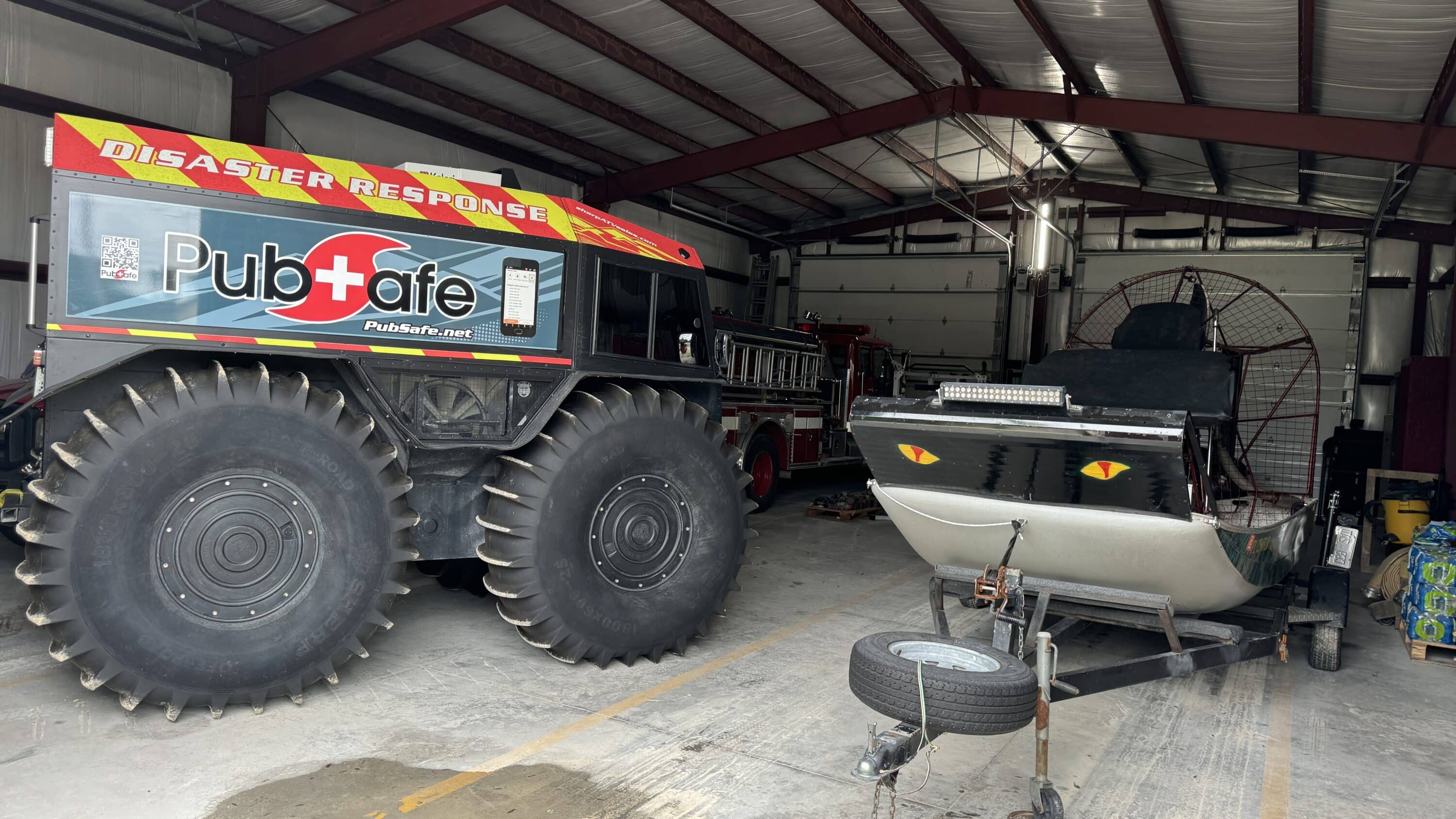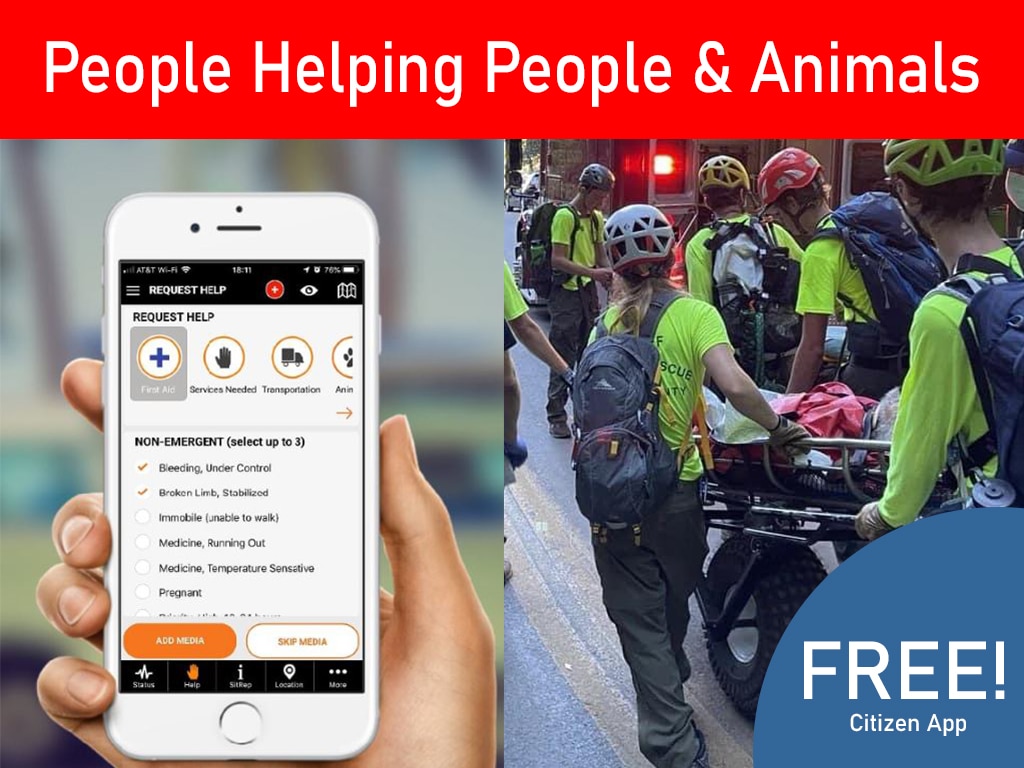Rescue Mission in Ingles, Florida
Urgent Hurricane Helene Storm Surge Rescue Operation
When disaster strikes, every second counts. Join us as we recount just one of thousands of search and rescue mission during the Hurricane Helene Ingles, Florida storm surge.
Join the Rescue Effort
The Storm Surge Crisis
In the early hours of Friday morning, Hurricane Helene hit Ingles, Florida, causing widespread flooding and power outages. Amidst the chaos, a distress call was received: five individuals trapped in a mobile home, surrounded by rising waters in a remote area. The urgency of the situation was clear, and the Withlacoochee Regional Search and Rescue team, equipped with the PubSafe Sherp, sprang into action.
Leveraging fire rescue, search and rescue, and local knowledge, we navigated the treacherous conditions to reach those in need. This is one story that represents thousands, many far more dangerous, executed by government and volunteer search and rescue personnel.
Rescue Operation Timeline
A detailed account of the events leading up to and during the rescue mission.
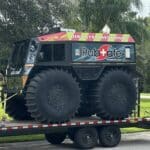
'01:30 AM
Distress Call Received
The radio crackled to life with an urgent call for help. Five people were trapped in a mobile home, and the floodwaters were rising fast.
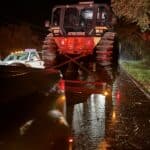
'01:40 AM
Team Mobilization
Within ten minutes, our team was assembled at the firehouse, ready to deploy. The storm surge was rising, but we were determined to reach the stranded individuals.
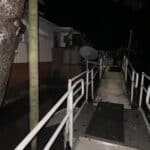
'02:00 AM
Equipment Preparation
In blackout conditions, we loaded the Sherp onto the trailer. The wind and rain made the task challenging, but we were undeterred.
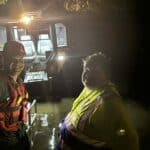
'02:30 AM
En Route to Rescue Site
With the Sherp secured, we set off towards the remote location. Six miles down a flooded dirt road, flood water stopped our progress
The Approach
We were able to get fairly close to the community before the flood waters covered the road. We could see the water was flowing fast as it was coming in. By the time we unloaded the Sherp, the water had made it to the truck. It was obvious we could leave the truck and trailer where it was. Getting a 25’ trailer and an F-450 turned around on a two lane dirt road took time. Eventually the truck was parked a quarter mile up the road and we were on our way.
As we entered the flowing water covering the road, we realized just some of the potential hazards when we saw water moccasins swimming by and down power lines in the water. Getting a power line wrapped in the Sherp wheels would create a new set of problems we didn’t want. At times, the Sherp was floating and the thought of the rapidly moving water crossed my mind.
Using maps on a cell phone, we weaved our way to the back of the “neighborhood”. We were moving slowly since the Sherp was floating and only goes about 3 mph in water. We navigated around trees, boats, more power lines and anything that would float. We eventually saw a light through the trees and headed that way. I can only imagine the surprise of the people seeing a Sherp emerge from the abyss to carry them to safety.
Sherp ATV for SAR
The Sherp ATV is one of the most capable search and rescue vehicle available. In our scenario post Hurricane Helene it provided 10x the safety of a rubber boat. It allowed us to transport 5 people safely and comfortably, one being on a backboard, which would have been almost impossible in a rubber boat. In other areas when the water started to recede, boats were unusable because of dry ground or shallow water between flood areas.
The Sherp was able to easily and quickly move from dry ground to water. Even a big military truck would not have worked in the tight spaces of the victims front yard. The areas we went were tight and maneuverability was essential. Also, when you cannot see the ditches, you run a risk of a rollover or getting stuck.
Every asset has its pros and cons but a Sherp should be part of every SAR teams inventory. If you are interested in getting a Sherp, DM us and we will connect you with the right people. We will even demo our unit for you if you are in our area of west central Florida. We recently helped the Hillsborough County Sheriffs department with this process.
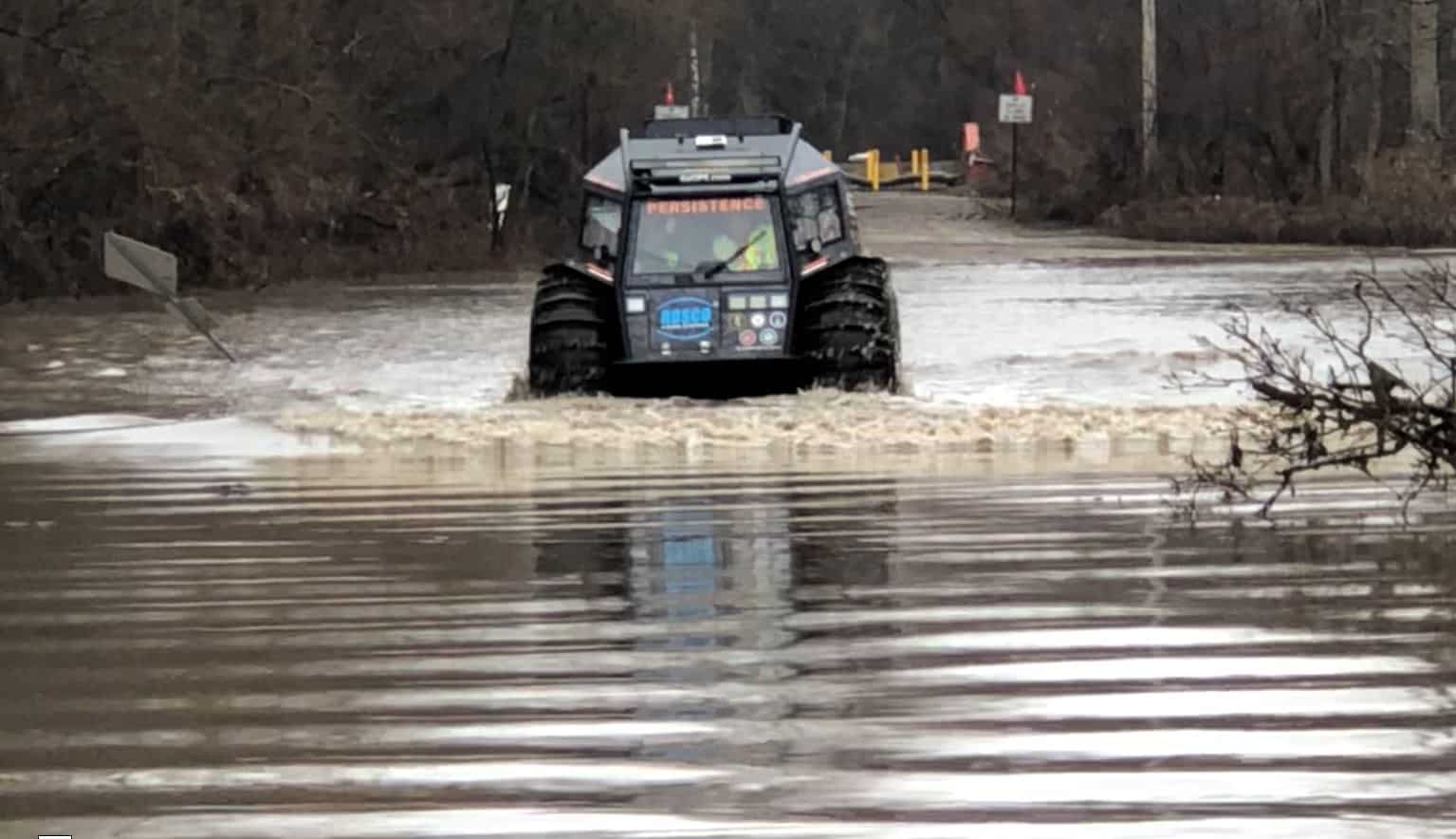
The Evacuation
After arrival, we were informed only one young female adult wanted to leave. After some discussion she was able to convince the paraplegic man he should leave since the water was still rising at that point. The other three adults and 6 dogs refused to leave.
Moving the paraplegic 250 lbs man was a challenge. We put him on a backboard, and dragged him through the narrow hall and door of the trailer. We carefully maneuvered through waist deep water and loaded him into the Sherp. We exfiltrated without incident and drove the Sherp on to the trailer with passengers inside. Upon arrival at the incident command center, they were unloaded. They were appreciative and we were proud to complete a successful mission.
When we arrived at the command center, a FEMA task force was there. It was now about 0600 and we had been up over 24 hours. We had one last mission which was to retrieve the fire department mechanic from his home. The generator at the fire house wasn’t working and there was no way to make coffee. It was a true emergency.
His home was on pillars but the road was flooded with 5′ of water. By now the water was returning to the ocean and there were dry patches of road, between minor flooding, up to 4’ or more. The Sherp moved right through it.
This scenario is representative of hundreds of similar rescues in the aftermath of Hurricane Helene by volunteers and professional executed during the aftermath of #Hurricane #Helene. Many people are working days and weeks under difficult conditions. We did what many others did because people didn’t listen when they were told to leave. There is no plan for 8’ of flooding when you home is at ground level. People’s minds seem to freeze and forgo any forward thinking of the consequences of staying and the people they put at risk.
Lessons Learned
- Have your gear packed and ready before the power goes out. Have a lantern in your prep area to make final prep easier.
- Have waterproof radios for team communication.
- Get radio frequencies for the local authorities and program them into your radios before the storm.
- Have an emergency comm plan with officials on their frequencies. ie Your dispatcher can talk to theirs if you go offline.
- Have a waterproof tablet with downloaded maps a long battery life. Include a tether.
- A small boat requires 3 people. Operator, navigator, scout to watch for obstacles and people.
- Have large headlamps mounted to your helmets to light in front of the boat or working around the Sherp.
- Carry a portable waterproof spotlight.
- Carry a megaphone, whistle and flashing lights to draw attention from people inside a structure.
- There is no central management platform being used for fire departments, FEMA and volunteers can use. There is no map showing all assets. PubSafe provides just this.Sign up and get everyone on the same map view.
- Boats have a focused application and are limited in shallow water. Amphibious vehicles like the Sherp are needed. If not multiple units at the County level, then at the state level to be shared.
- Having someone outside the area in a dispatching capacity is a big help. They can make calls, coordinate and communicate while responders do their thing.
- Knowing your local fire department will open doors when you are competent and bring assets to the situation. They are sometime limited when you may not be.
- Take a large portable battery is helpful for charging phones or running a fan if a generator is not an option.
- Take MREs for the first 24-72 hours
- Bulk drinking and rinsing water 5 to 25 gals.
- Find a comfortable place to stay in your staging area. Being able to prep in a hotel and recover after, is a great luxury and good for your physical recovery if you are not twenty something years old.
Join PubSafe as an NGO, FBO, or Gov Agency
PubSafe is the most affordable disaster response platform available that bring organizations together, allows for dispatching work orders, and provides a central map. At only $5/mo per user for the months you are using it, it is affordable and essential. There currently is no charge for the portal, just for the upgraded Pro mobile app needed to access the portal.
Enjoy a free Pro upgrade for 30-days to try out the Pro app and web portal. Click below to get started.
Support Your Local Heroes
Your local search and rescue teams are the unsung heroes who sometimes risk their lives to save others and certainly spend their money. They need your support to continue these life-saving missions. Consider volunteering your time or making a donation to help us stay prepared and equipped. Your contribution can make a significant difference. Join us in our mission to save lives and protect our community.

